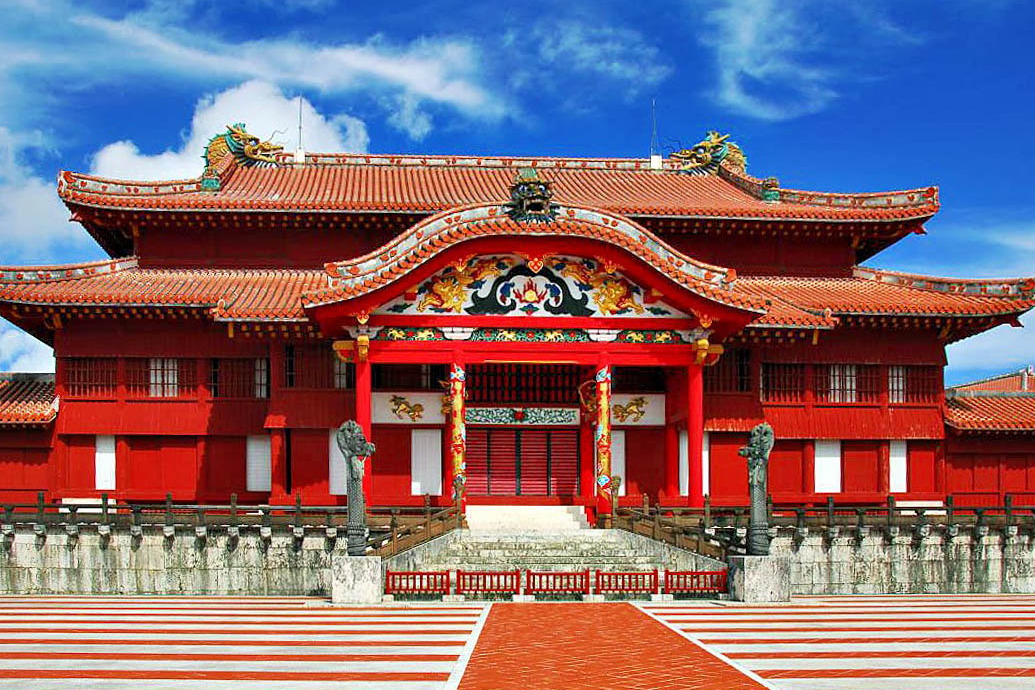In the azure expanse of the East China Sea, a chain of tiny islands lies hidden, belying their immense impact on world history. These islands, collectively known as the Ryukyu Archipelago, have long been a crossroads of maritime trade and cultural exchange in Asia. 🗺️
💎 A Unique Indigenous Culture 💎
The Ryukyu Islands are home to a unique indigenous population that stands apart from mainstream Japanese society. With their own languages, traditions, and a storied maritime empire, the Ryukyuan people have carved out a distinct identity over the centuries. 🗣️
At least six distinct languages are spoken across the archipelago, such as Amami, Kunigani, Okinawan, Mikayo, Yaeyama, and Yonaguni, all mutually unintelligible with standard Japanese. This linguistic diversity is a testament to the rich tapestry of Ryukyuan culture. 🌐
🏯 The Golden Age of the Ryukyu Kingdom 🏯
Unlike the inward-facing shoguns of Japan, the kings of Ryukyu built their civilization on long-distance maritime trade, resulting in a cosmopolitan society infused with influences from China, Japan, and Southeast Asia. 🌍
The Ryukyu Kingdom reached its zenith during the reign of the Shō Dynasty, when Shuri Castle, the royal seat, was transformed into a magnificent palace in the Chinese style. This architectural marvel symbolized the kingdom’s commitment to emulating the grandeur of imperial China. 🏡
🎎 A Melting Pot of Cultural Influences 🎎
The Ryukyuan aristocracy embraced diverse cultural elements from their trading partners. Buddhist monks from Japan and Korea popularized their faith in the archipelago, leaving behind the grand temples of Enkaku-ji. Meanwhile, the dragon pillars at Shuri Castle, modeled after structures in Cambodia and Thailand, exemplified the influence of vibrant Southeast Asian cultures. 🛕
👑 The Legendary Kings of Ryukyu 👑
The royal line of Ryukyu was full of remarkable personalities, such as the swashbuckling pirate king Shō Toku and the revered reformer Shō Shin. Shō Shin consolidated royal power by coaxing local warlords to live at Shuri Castle, effectively transforming them into pampered courtiers. He also established the Kikoe-ogimi, a position reserved for a woman of the royal family to lead the ancient Noro priestesshood. 🤴👸
🥋 The Birth of Okinawan Martial Arts 🥋
According to legend, the origins of Okinawan martial arts can be traced back to the era of Satsuma’s occupation of the Ryukyu Kingdom. Forbidden from carrying weapons, the Ryukyuan peasantry ingeniously repurposed farming tools into improvised arms, giving rise to iconic weapons like sai, tonfas, nunchaku, and bo-staffs. The restriction on bearing arms also necessitated the development of unarmed combat, leading to the birth of karate. 🥋🔥
🇯🇵 The Japanese Occupation and Assimilation 🇯🇵
As Japan underwent its rapid modernization during the Meiji era, the Ryukyu Kingdom was seen as an antiquated relic that needed to be brought into the modern age. In 1879, the kingdom was dismantled, and its territories were fully incorporated into the Empire of Japan. 🗾
The following decades were challenging for the Ryukyuan people, who faced suppression of their culture and languages. Non-Japanese influences were erased, and the native Noro priestesshood was forced to assimilate into the state-mandated Shinto faith. Students caught speaking Ryukyuan languages in schools were publicly humiliated. 😞
💥 The Battle of Okinawa 💥
The Imperial Japanese occupation of the Ryukyus reached its tragic climax during World War II, when the Battle of Okinawa unfolded. Thousands of Ryukyuans were conscripted and sacrificed in the horrific clash, and those caught speaking their native language were labeled as spies and executed. Over half of Okinawa’s population perished, and countless historical monuments, including Shuri Castle, were destroyed. 💔
🌺 Preserving the Ryukyuan Legacy 🌺
Despite the many tribulations they have faced, the modern peoples of Okinawa, Yayama, Mikayo, Amami, and the other inhabited islands continue to hold true to their unique cultural identities. In a democratized Japan, there is a growing movement to protect and celebrate the rich heritage of the Ryukyuan people. 🌺
Their songs are still sung, their customs still practiced, and the legacy of their once-mighty maritime kingdom is kept alive, ensuring that the vibrant tapestry of Ryukyuan culture endures for generations to come. 🎶🎉
Copyright © 2025 Hea1th.net

